There can be your advertisement
300x150
How to Apply Liquid Wallpaper to Walls?
When paint and other coverings become boring, it's time to look at new finishing materials — for example, liquid wallpaper. We explain how to properly apply it to the wall, as well as what advantages, disadvantages, and features modern finishing has?
Features of the coating
Liquid wallpaper is an eco-friendly finishing material. Its base consists of cellulose, silk or cotton fibers. It is sold as dry flakes in plastic bags and diluted with water before application to the wall. Like any type of finishing, it has its own advantages and disadvantages. What are they?
Advantages
- Manufacturers add anti-fungal compositions to the base — walls won't be covered with mold.
- No need to match patterns and seams: liquid wallpaper is applied directly to the entire wall surface, like paint or decorative plaster.
- If you damage a section of the wall — no problem. Just reapply the mixture and let it dry.
- No need for perfect surface leveling: minor wall irregularities are easily masked by the finishing layer.
- You will save money on painter work and surface sanding.
- Also, you won't need additional thermal and sound insulation.
- Liquid wallpaper does not absorb odors, dust or dirt — so you don't need to worry about using it in the kitchen or children's room.
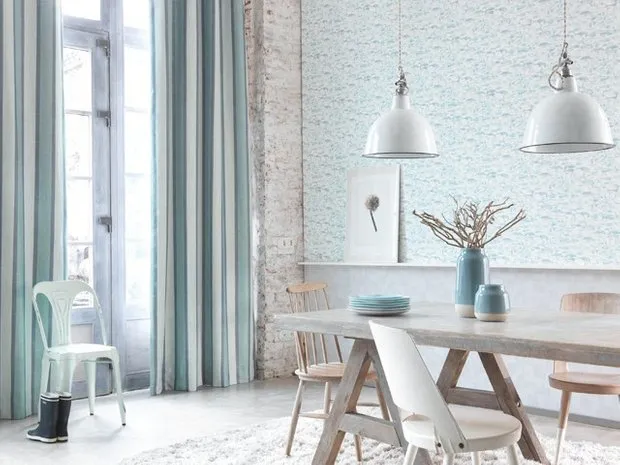
Disadvantages
- They cannot be washed.
- You need to wait a long time for drying: in cold weather — up to three days.
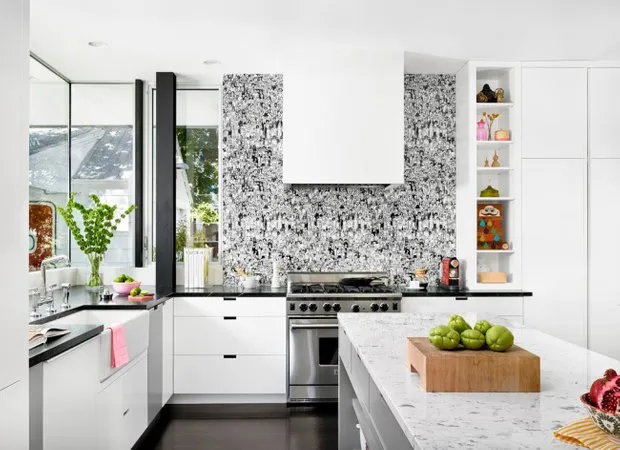
Technique for Applying Liquid Wallpaper
Level the walls
After application, liquid wallpaper masks small wall imperfections, so perfectly smooth surfaces are not required. Simply remove nails, protrusions and depressions larger than 2–3 mm.
Then treat the surface with primer. Primer improves adhesion of the finishing material to the wall.

Prepare the mixture
How to mix liquid wallpaper? Usually, one package is enough for 7–8 liters of water. Use only clean water with a temperature not exceeding 30°C.
Here are a few tips to help prepare the material quickly.
- Choose a deep container for mixing so that the solution doesn't spill over the edges.
- Empty all the mixture from the packet and add five liters of water first.
- As you pour in the water, stir the solution until it's uniform.
- Do not use an electric mixer, especially a household one: stir only by hand.
- If necessary, add more water: the mixture should not be too thin or too thick.
- Leave the prepared mixture for 12 hours before applying liquid wallpaper.

How to properly apply liquid wallpaper using a trowel?
To avoid disappointment, follow this simple guide.
- Take a trowel and begin applying liquid wallpaper from the corner or one edge of the wall. Optionally, use a Hopper gun — a special device that helps evenly apply the material to the wall.
- Distribute the finishing layer. Recommended thickness is no more than 2 mm.
- Do not press down on the trowel to avoid damaging the textured layer.
- The material should come from one batch to ensure uniform thickness and texture.
- Let the coating dry: depending on temperature and thickness, wait from 12 hours to three days.
Leftover liquid wallpaper can be stored in ready-made form. The mixture should be dried and then reused without losing quality.

Liquid Wallpaper: Video
Applying liquid wallpaper with a roller
First, choose a roller. What to pay attention to?
- The nap of the roller should be 3–4 mm thick to roll the material to the desired thickness.
- Choose a tool with sparse and stiff nap: it makes the process easier — the material won't stick and will spread evenly on the wall.
How to apply liquid wallpaper using a roller? Dip the roller into the mixed solution: it should not be too thin or too thick. Then start applying liquid wallpaper from one corner of the wall to another, without interruption. To avoid visible transitions from row to row, mist the drying sections with water.
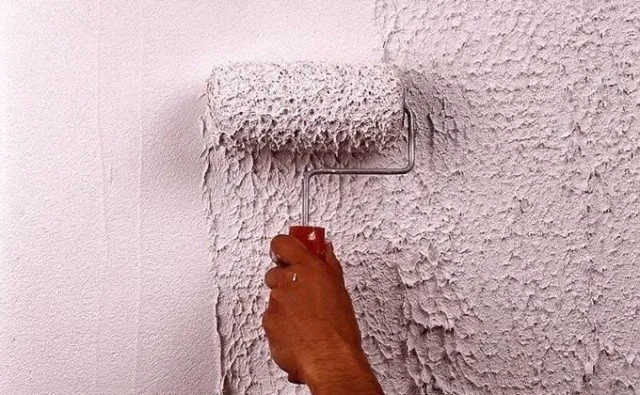
Features of application on different surfaces
The advantage of the material is that it masks wall imperfections and can be applied even over old finishing, such as paint. If the surface was painted, it is not necessary to remove the old coating — the textured layer of liquid wallpaper will cover all irregularities. The application principle is the same as on bare walls.
Final touches. What to coat the surface with to make it last long?
After applying liquid wallpaper, you can coat the surface with varnish to better protect it. There are two methods.
The first one is to add varnish directly during mixing the dry mixture with water. After complete drying, the coating becomes more durable — walls won't get wet and moisture resistance increases.
The second method is traditional. Varnish is applied to the finished surface using a brush, roller or sprayer. After drying, the protective layer is nearly invisible.
How to care for the coating?
Liquid wallpaper should not be washed with water or used with abrasive cleaning agents. To remove dust, use a regular vacuum cleaner. If a spot or scratch appears, just reapply the mixture.
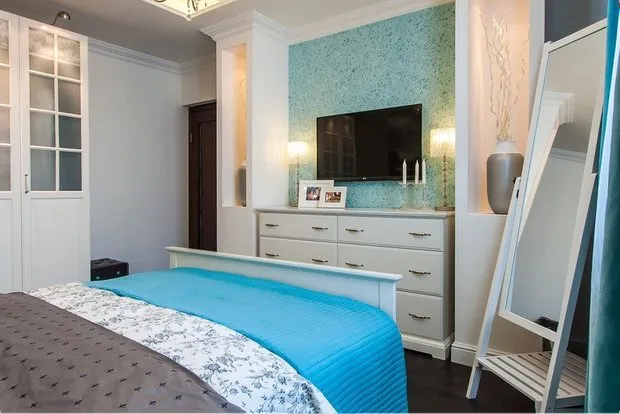
How to properly remove liquid wallpaper from the wall?
The surface can be cleaned using simple warm water: the wallpaper is water-soluble. In addition to this, you will need a brush and a spatula. Apply warm water to the surface with a brush. Leave it for 7–10 minutes so that it penetrates and becomes elastic. Then carefully scrape the material off the wall with a spatula.
If you coated it with varnish, special chemical agents may be needed — look for them in construction stores.
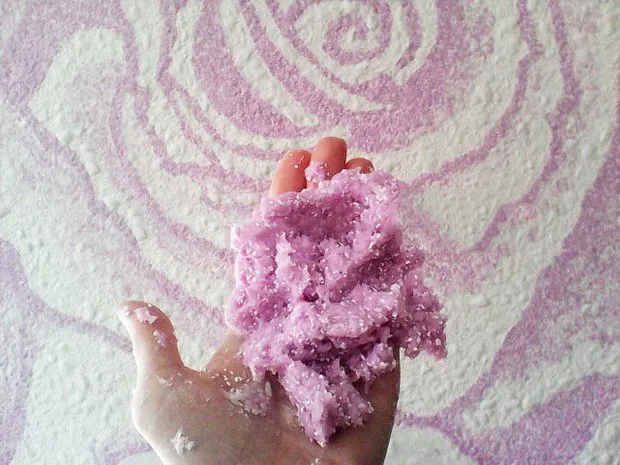
More articles:
 How to Zone a Small Studio: Favorite Tips from Professionals
How to Zone a Small Studio: Favorite Tips from Professionals Completing the Season of Big Discounts and Promotions
Completing the Season of Big Discounts and Promotions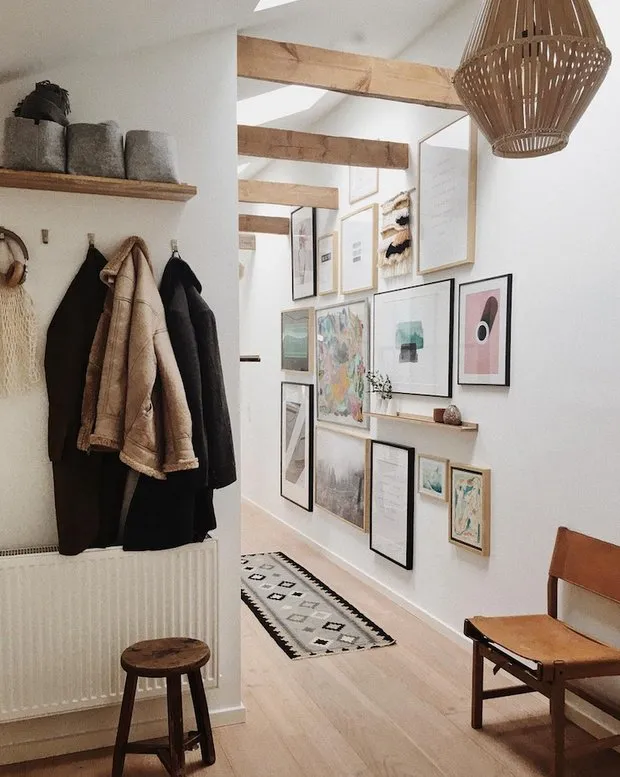 How Scandinavians Store Things: 7 Design Hacks
How Scandinavians Store Things: 7 Design Hacks How to Start Your Own Design Studio: The Story of Geometrium Founders
How to Start Your Own Design Studio: The Story of Geometrium Founders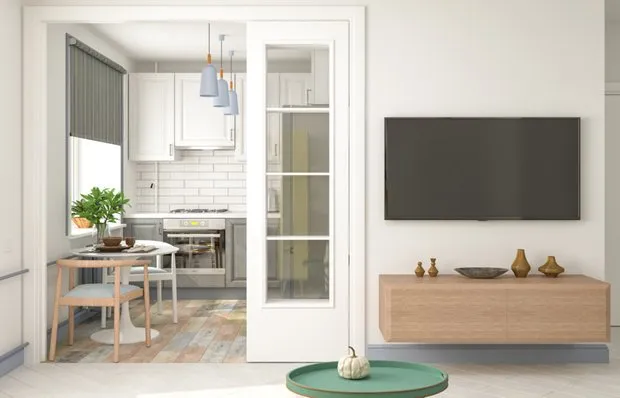 How to Fix a Poor Apartment Layout: 6 Examples
How to Fix a Poor Apartment Layout: 6 Examples Preparing a Country House for Winter: 8 Tips
Preparing a Country House for Winter: 8 Tips 7 Design Solutions That Are Outdated
7 Design Solutions That Are Outdated How to Extend Summer: Idea for a Small Living Room
How to Extend Summer: Idea for a Small Living Room